Pig production involves raising and managing pigs primarily for meat (pork). It is a profitable business because the cost of production is low compared to other large livestock farming businesses. It requires low to medium capital to start. The degree of profitability depends on production management.
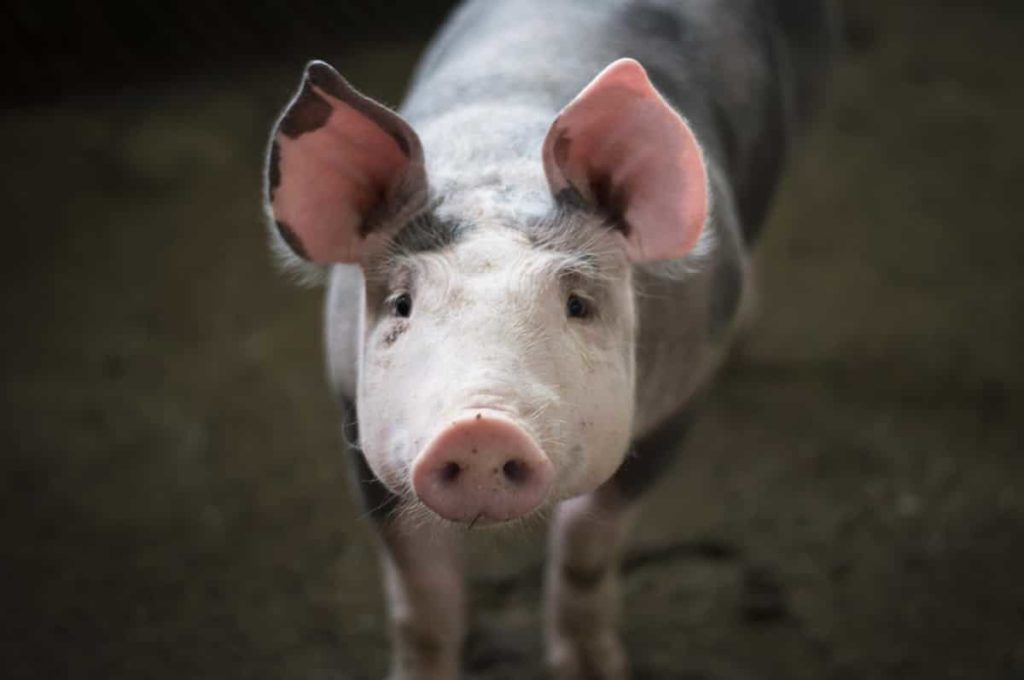
Pigs also have a high disease resistance (they hardly get sick) and adapt easily to most environments (hot or cold). It makes to raise pigs on both a small and large scale. Because of this adaptability, pigs make excellent candidates for intensive or diversified agriculture that fits a wide range of budgets.
How to start Pig farming from scratch
Is pig keeping profitable?
The pig farming business is very profitable, and many people are making money all over the world by starting pig businesses. You should check with your local agency to see if you are allowed to keep any livestock, especially pigs, in your area of residence. Some countries have specific requirements before you are allowed to keep livestock.
You should plan how many pigs you plan to raise. It depends on the amount of land you have. Usually, 50 square feet is required for accommodation. You should also consider the amount you are willing to spend to set up a pig farm. Pig farming, the raising of pigs for meat, can be organized in a more or less sophisticated way, but it can be analyzed based on the production cycle and divided into two parts:
- The farrowing sows for the production of weanling piglets,
- The rearing of piglets as future breeding animals or pigs for slaughter.
Pigs grow very quickly in market size because of their surprisingly high feed-to-meat conversion ratio. It simply means that pigs produce more meat (meat) per kilogram of feed than cattle, goats, and sheep.
How many pigs should I start with?
- Starting with two or more pigs will cost you more than starting with one. However, starting with a boar and two boars (gilt) is advisable. With three pigs, you can monitor them and ensure they get enough nutrition and care. You can add more pigs once you get used to caring for them. Your pig-raising adventure should be successful if you start with good, healthy feeder pigs.
- Remember that feeder pigs can only grow to their genetic potential, which will only happen if you do your part to ensure they have a happy life and access to food and water. Plenty of your pigs need to live in a comfortable area, even when the weather gets extreme, really cold, or hot. Some of these extremes can be avoided when you raise your pigs at different times of the year, so they are happiest, such as spring or fall.
In case you missed it:17 Key Rules for Effective Piggery Management: From Planning to Reduce Production Cost
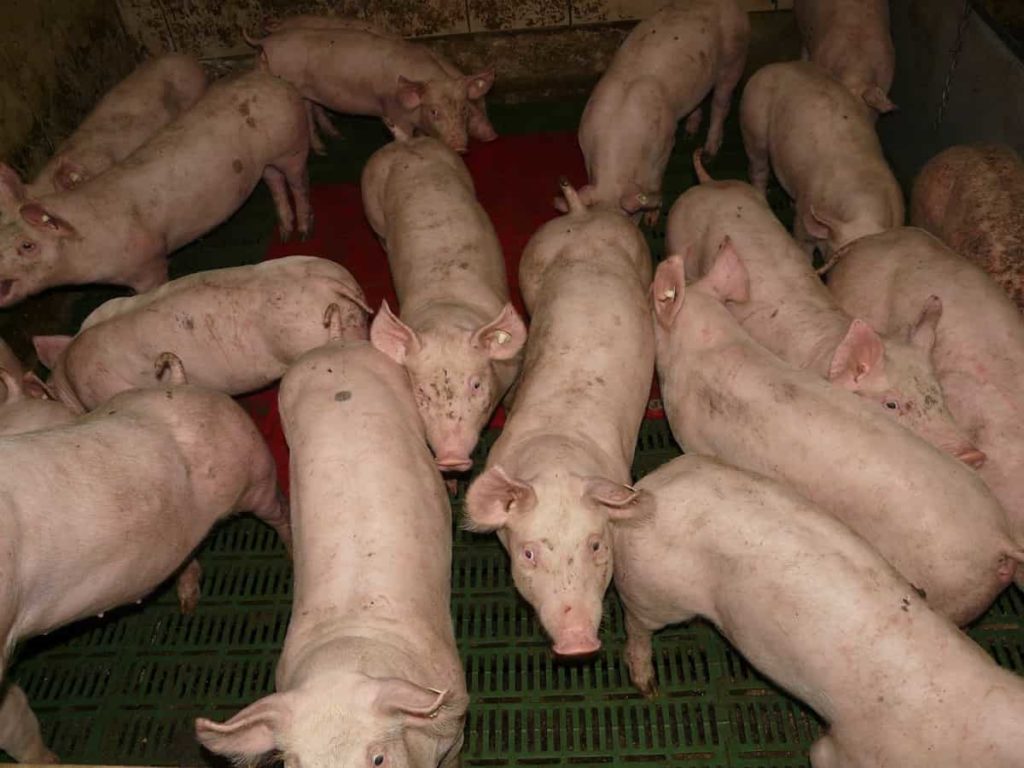
How many months does a pig take to grow?
- On average, it takes a pig about six months to reach a market weight of 280 pounds. It all starts with the farrowing phase. As energy sources, choose a grain mix of barley, wheat, sorghum, and corn for your pig’s diet. At least half of mix number two should be yellow corn. Although low in protein, it is considered the main energy source in pig diets. It is one of the most economical feedstuffs available for swine production.
- Pigs will grow from a birth weight of four pounds to 250 pounds in five and a half months. Pigs will need another month to grow to 280-300 pounds. Using unusual or rare breed genetics, hot weather, having pigs on pasture or in wooded areas, or restricting grain will also increase the time it takes to grow a pig.
Can I make money raising pigs?
Many farmers start their livestock business by raising pigs for profit. Pigs can be an economical method to get a good return on your initial investment if you keep costs and infrastructure costs in mind. Raising pigs for profit is not for everyone, but it can be a good way to generate income for your household.
What is selection in pigs?
Breeding animals should be evaluated for reproductive fitness, skeletal soundness, growth, potential yield, frame size, leanness, and muscles. Superior animals excel in all these traits. Producers should not select animals for any one trait without considering others. Important characteristics to consider in developing a good sow herd are;
- Size of litters
- Litter strength and vigor
- Milking ability
- Temperament
- Gain and feed efficiency, fertility
Selecting individual animals from the herd is more important than selecting a particular breed. Every producer should purchase their animals from a reliable, disease-free herd and obtain as much animal information as possible when establishing their herd. Once the herd is established, the selection of gilts and sows for replacement in the breeding herd should be based on types and performance.
How do pig farmers make money?
- Traditionally, market-weight pigs are sold to processing plants or through livestock auctions.
- To increase profits, specialty producers may sell holiday lightweight rooster pigs, quality feeder pigs to youth exhibitors, or purebred breeding stock to producers.
What size pen do I need for two pigs?
- Ideally, your pig pen will be twice as long as it is wide. An 8-by-16-foot pen will be enough for two feeder pigs to stretch their legs. Indoor pigs should be protected from drafts but also have good ventilation.
- If you are starting a new pig pen rather than an existing one, make sure the pen is at least three feet high. This height is high enough to accommodate your pigs as they grow. Galvanized mesh panels are ideal for pens, but wood or other fencing options will also work. No matter where you keep your pigs, ensure the fences and gates that make up your pig pen are secure and strong.
What is the best practice for raising pigs?
- There are many ways to raise pigs. Pens, pastures, concrete slabs, or forest settings come to mind. You don’t need to start a large hog operation to make a profit. But you need to be practical about how to raise pigs in the environment you have created. If you’re going to be a small producer, you need to have a plan for how it’s going to work.
- You will need to start with secure fencing at home. You must train the breeding stock and the pigs using an electric fence. It is not difficult to do, and most pigs learn quickly. We rarely have any pigs touch the wire, as they have learned where it is, which is unpleasant.
- The fence can be made of pallets or boards and posts. The electrical wire should be a few inches from the fence line. Some farms raise pigs in a forest setting. Pigs eat roots naturally, and grain is added to ensure good growth. It is common for pigs to be fed grain, or hog ration, on pasture. Modern pig breeds have become efficient breeders. The time from buying a pig feeder to slaughtering a market-size hog is between six and eight months. The market for pork products produced by small farms is good. Consumers are happy that the pork taste from their younger days is returning. Captive-raised hog meat can’t hold a candle to the flavour of locally raised pork from small farms.
In case you missed it: Earning 20 Lakh Per Year from Raising Pigs – A Success Story of a Pig Farmer
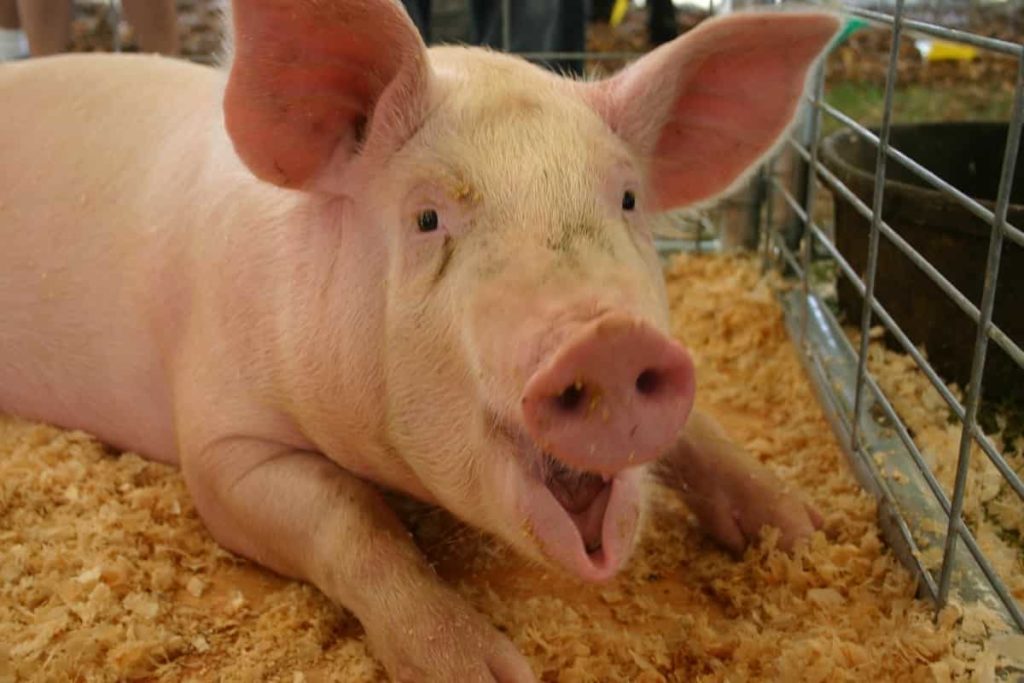
What is the best pig breed for beginners?
Below are the top picks for great pig breeds for beginners and why we chose each. The best pig breeds for beginners are American Yorkshire, Berkshire, Chester White, Duroc, Hampshire, Hereford, Landrace, and Large Back.
What are the factors to consider in constructing a pig farm?
- Industry trends and prospects
- Production systems and markets
- Unit size
- Location
- Housing
- Labour
- Feeding and water.
What is a shelter made for pigs called?
- A hog house called a pigpen is a building for housing swine, especially one with facilities for housing many horses under one roof. Normal housing protects against extremes of heat and cold and provides draft-free ventilation, sanitary bedding, and food. Simple hog houses are sometimes called sties. Ideally, your pig pen will be twice as long as it is wide.
- An 8-by-16-foot pen will be enough for two feeder pigs to stretch their legs. Indoor pigs should be protected from drafts but also have good ventilation.
- Pigs require less predator protection than other livestock but need sun protection. This shelter system provides important shade when the sun is high and hot. There are many reasons for raising pigs.
- The temperature range required to achieve optimum pig productivity is called the thermoneutral zone. The pig’s heat production within this zone is independent of air temperature and, therefore, determined by its live weight and feed intake. The critical temperature varies according to the total weight of the pig and the specific conditions in the pig. If pigs spend time shivering and eating more than usual, they are usually cold.
What is the best housing for pigs?
- Pigs need dry bedding and protection from extreme temperatures and sunlight. Minimum requirements for space, fresh air, hygiene, access to food and water, and housing applications. These pigs must not suffer from disease or injury.
- Independent of environmental conditions, the minimum amount of fresh air in a building to remove water vapor, carbon dioxide, ammonia, and bacteria and odors (depending on the number and class of animals) should be entered. However, ventilation lowers the temperature in the shed, so insulating the roof and walls is important to reduce heat gain or loss through conduction and uncontrolled air changes.
- Insulation protected by using a vapor barrier (if the insulation does not form its vapor barrier) reduces condensation inside the pig shed. It protects the interior lining and reduces the amount of ventilation required to prevent condensation in the building. Pigs can be housed singly or in small groups in pigsties, concrete, or solid-floored pens with less shelter. While styling, you should choose an area that never gets flooded during the rainy season. It should not be too close to houses to avoid odor, and flies are a nuisance.
- Before shipping your pigs, you should ensure that you have prepared a shelter for pigs. A sturdy pen can be a good choice. The pen will protect pigs from hot and cold temperature conditions and unwanted intruders. Ensure the pen is large enough to accommodate the pigs, even if they are large. The pen should have a feeding and watering trough. A fence should be built around the pen so the pigs can enjoy the outdoors, be safe, and not get lost.
What is the best place or location for raising pigs?
- In cold weather conditions, pigs will seek protection from the cold and wind. Many pig farmers recommend you provide your pigs with at least 15 to 20 square feet of shade.
- In general, pigs require minimal space. Whether you choose to keep pigs indoors or outdoors can determine the amount of space needed per pig, it is recommended that you plan on about 8 square feet of space per pig for growing pigs. It may seem small; pigs are not very active animals. Rather, their preferred behaviors are sleeping, eating, and rooting.
- However, more space should be used if you cannot provide indoor shelter for your pigs. It is less for pigs and more for manure spreading and pasture management. Pastures for high traffic will help you manage the damage that pigs can do to the landscape.
How do I get started with pigs?
- Start with two pigs
- You need a strong fence
- Give the pigs a place to sleep
- Plan compost, sludge, and dung
- Pigs are not always cost-effective
In case you missed it: Common Mistakes in Pig Farming: For First Time Pig Owners
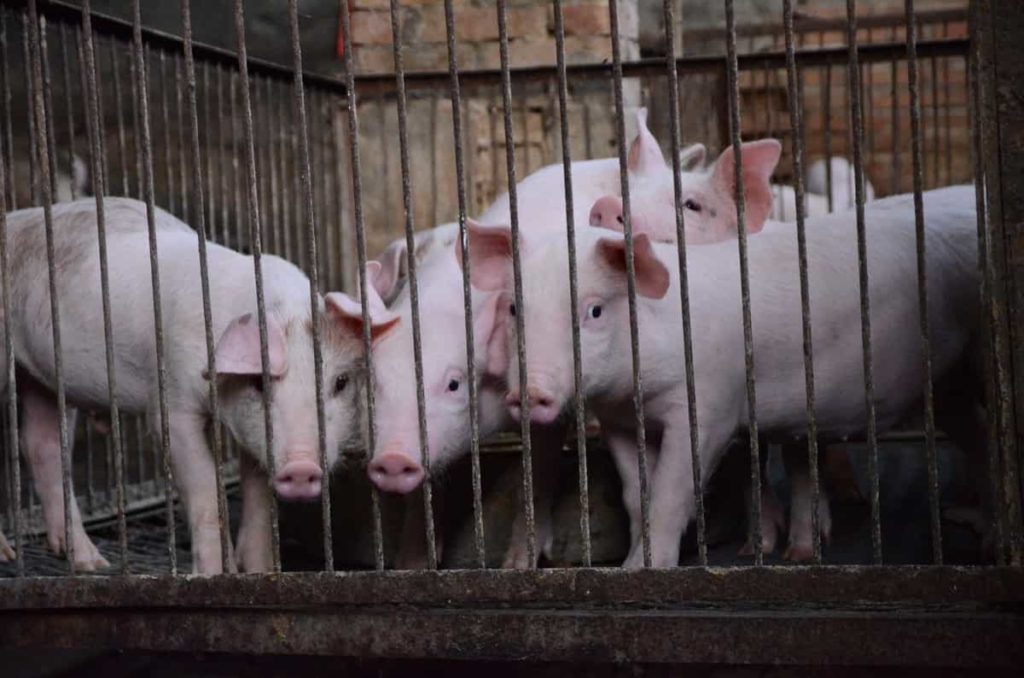
How much cost do I need to start a pig farm?
So, you can spend anywhere from $500 to $10,000 to start a small free-range farm. Large-scale farms can require up to $2 million to get going.
Which breed of pig grows the fastest?
Duroc is known to be among the hardiest and fastest-growing pigs.
How much space do you need for 100 pigs?
You should plan about 8 square feet of space per pig for growing pigs. Although it seems like a small place, pigs are not very active animals.
What is the best pig meat?
- Yorkshire pig
- Duroc pig
- Berkshire pig
- Meishan pig
- Landrace pig
- Chester White pig
- Hampshire pig
- Pietrain pig
What should you feed pigs?
- Pigs can eat scraps or leftovers such as cereal, bread, vegetables, fruit, and pig pellets. Real pig pellets, however, are excellent feed. Don’t feed just one vegetable (such as Cabbage), as pigs need a varied diet to stay healthy.
- Although water management can teach pigs to use space, limiting feed and water is not a useful tool in pig production. To grow efficiently, pigs need 24-hour access to food and water. It is usually accomplished with a self-feeder that can be purchased at a feed store, or you can make your own. The purpose of a self-feeder is to allow pigs free choice to eat as much as they want in a day.
- Access to feed throughout the day improves performance compared to pigs fed a fixed amount of feed 1 or 2 times per day. Diet for beef pigs is very specific for growth performance. Most nutritionists formulate pig diets to maximize growth and minimize feed intake.
- When raising pigs, the feed will be the most expensive input that cannot be avoided. Although you may have heard of people selling ‘grass-fed’ pork, pigs require more energy and protein to grow than grass can provide. You must feed your pigs a nutritionally balanced diet for their needs.
- High protein, especially high lysine content, and energy are critical for growing pigs. Give your pigs a selection of fruits and vegetables. Pigs need to eat their fruits and vegetables to grow. It’s safe for them to eat any product you would eat. However, they are particularly partial to leafy greens such as Lettuce, Cabbage, Spinach, and Sweet Potato Vines, as well as Apples, Bananas, Pears, Melons, and other fruits.
- You should feed your pigs root crops. Pigs cannot get enough vegetables such as Potatoes, Carrots, Sugar Beets, and Parsnips. Sweet, colorful produce is not only the most palatable for pigs but also contains the highest amount of beneficial vitamins and minerals. Fruits and vegetables are more nutritious than other types of food, so your pigs should include as many as possible at the top of their grain-based diet.
How many times should a pig be fed?
Plan to feed your pig about 7 pounds for every 30 pounds. Pellet feed, such as creep feed, comes in small, digestible pieces that are the perfect size for young pigs. These feeds are formulated to meet the unique nutritional needs of growing pigs and have a balanced mix of protein, carbohydrates, and essential vitamins and minerals.
Farm supply stores can find creep feed and other nutritional supplements for newborn pigs. Each of your pigs should get about 20 grams of crape feed per day at one or two feedings.
How much water do pigs drink a day?
Daily drinking water requirements for pigs range from less than 0.5 gallons/pig/day for newly weaned pigs to more than 1.5 gallons/pig/day for nipple drinkers under hot conditions. Pigs raised using bowl/cup drinkers, or wet/dry feeders use less water, typically averaging more than 1.0 gallons /pig/day. Clean, cool, and good-quality water should be available at all times, except in situations where it is more appropriate to provide grower pigs is more appropriate.
Do pigs need to be fed twice a day?
It knows when, what, and how to feed your pigs will help them grow bigger and healthier. A balanced diet is also essential to produce high-quality meat if it is destined for the market. Start young pigs on a fortified dry diet that meets their complex nutritional needs.
Feeder pigs should have unrestricted access to everything they can eat, specially prepared, ground pig food when you’re feeding them at the market or in your freezer. Breeding stock pigs should be limited to feeding twice daily, with feeding amounts based on the pig’s body condition.
In case you missed it: Pig Farming in USA: How to Start
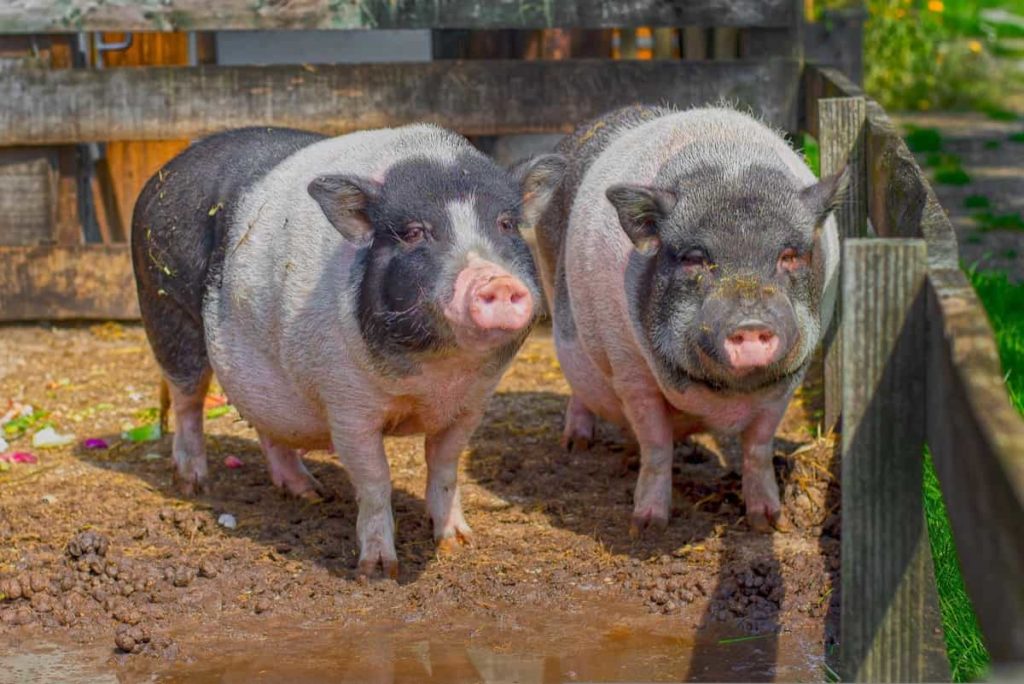
What are the common diseases of pigs?
Pigs are also susceptible to viral infections, including diseases that can mutate from human diseases, such as influenza (flu). These diseases will slow your pig’s growth and possibly lead to death if left untreated. A good relationship with a veterinarian is important when raising swine. Although not all veterinarians have experience treating pigs, they are an essential first resource in developing a health plan, guiding you to the proper medications and vaccinations to treat and prevent disease. How to tell if a pig is in bad health;
- Common signs: Lethargy, loss of appetite, labored or rapid breathing, sudden death, weight loss, underweight, and fever are usually accompanied by shivering in the pig.
- Symptoms on the skin: Redness or discoloration, hair loss and hardening parts of the skin, itching, and cracking.
- Other symptoms: Lameness, cough, abnormal nasal discharge, foul-smelling diarrhea, abnormal contents and color of feces, and abortions.
How do you keep a pig from getting sick?
It may be possible to reduce the risk of infection and disease severity in pigs by following these management strategies:
- Vaccinating herds
- Use of good biosecurity measures
- Practicing good hygiene
- Vaccination of pig caretakers with seasonal influenza vaccine
- Use of adequate ventilation system
What is the problem for pig farmers?
A major animal welfare problem in pig farming is the close confinement of pigs in a sterile indoor environment where they have no opportunity to explore, forage, and perform other natural behaviors.
What are the challenges of pig production?
Major challenges for the pig industry are inadequate slaughter facilities, unorganized marketing, inadequate supply of breeding stock, high feed cost, and low-quality feeds.
What are the common methods in swine production?
- The main production systems practiced are intensive and semi-intensive. However, joint production systems are semi-intensive, especially in small-scale pig production.
- In the most intensive system, pigs are fully housed and fed a complete diet. In this system, pigs are moved from one pen to another according to the production stage until they reach the market weight, i.e., 50 to 100 kg. On the other hand, in the semi-intensive system, some classes of pigs are kept outside the pig shelters, i.e., boars and boars live inside a frame fence where water, fodder, and shade are provided.
- In intensive and semi-intensive systems, breeding is controlled. To produce heat, boars are raised close to the sows. As in the intensive system, the offspring in the semi-intensive system is completely confined and fed a complete diet until they reach marketable age.
How can you prevent pig disease?
- Provide adequate food and water containers.
- Isolate new animals.
- Dispose of dead pigs properly.
- Use of disinfectants.
- Hire a veterinarian.
Diseases can affect the health of pigs. Some are caused by microorganisms, which normally live in the pig’s gut and are also in manure. These organisms can infect pigs in unsanitary sheds through dung or airborne dust particles. Clean, dry conditions reduce bacterial populations and minimize their impact on pig health and performance. Pig sheds with water flow channels, where manure is submerged within the channels, can reduce dust, odor, and airborne bacteria levels.
The house should facilitate adequate cleaning, disinfection, and maintenance of hygienic conditions. Good ventilation is essential for disease control, and air must be circulated inside the building to replace dirty air with fresh air. Disease-causing agents may be contained in urine, feces, exhalation, and nasal and mouth discharge. These can serve as media for the growth of disease-causing agents.
Pigs kept on pasture must be rotated in the paddocks. Pasture rotation disrupts the life cycle of many disease-causing agents because these agents are sometimes host-specific. Pastures can be rotated between different species.
- Provide adequate food and water containers.
- Isolate new animals.
- Dispose of dead pigs properly.
- Use of disinfectants.
- Get the services of a veterinarian.
In case you missed it: Pig Farming in Switzerland: Breeds, How to Start
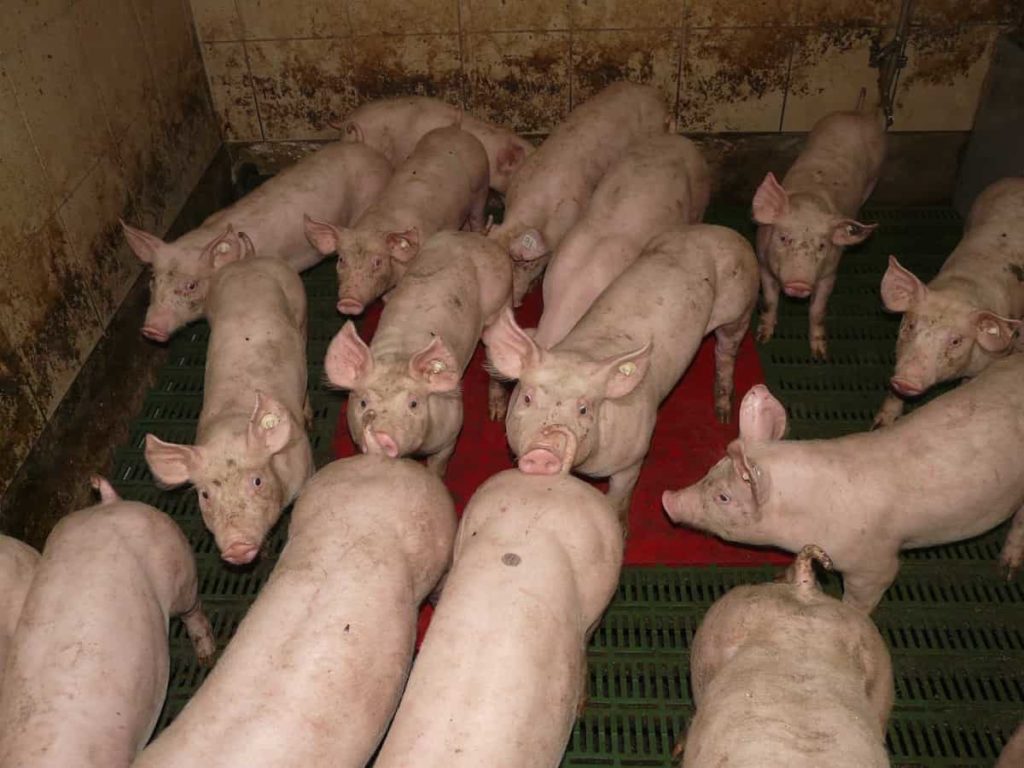
How do I know if the pig is healthy?
Healthy piglets should have bright, open eyes with pink eyelids. Pigs with dull, sunken, cloudy, twitching or irritated eyes are not normal. Excessive redness, inflammation, white or yellow discharge, hair loss, or discoloration around the eye can indicate a sick animal.
Conclusion
The pig farming business is the most profitable livestock business in the world. Pig farming has evolved to include new methods of herd health management and disease prevention, manure management, feed utilization and nutrition, and leaner hogs providing healthier meat. There are different things you need to consider before becoming a pig farmer. You have to follow the above guidelines that you need as a beginner hog farmer.
- Economical Aquaculture: A Guide to Low-Budget Fish Farming
- 15 Common Planting Errors That Can Doom Your Fruit Trees
- How to Make Houseplants Bushy: Effective Tips and Ideas
- Innovative Strategies for Boosting Coconut Pollination and Yield
- Pollination Strategies for Maximum Pumpkin Yield
- The Complete Guide to Chicken Fattening: Strategies for Maximum Growth
- Natural Solutions for Tulip Problems: 100% Effective Remedies for Leaf and Bulb-Related Issues
- Revolutionizing Citrus Preservation: Towards a Healthier, Greener Future
- Natural Solutions for Peony Leaf and Flower Problems: 100% Effective Remedies
- Maximizing Profits with Avocado Contract Farming in India: A Comprehensive Guide
- Natural Solutions for Hydrangea Problems: 100% Effective Remedies for Leaf and Flowers
- The Ultimate Guide to Choosing the Perfect Foliage Friend: Bringing Life Indoors
- From Sunlight to Sustainability: 15 Ways to Use Solar Technology in Agriculture
- The Ultimate Guide to Dong Tao Chicken: Exploring from History to Raising
- The Eco-Friendly Makeover: How to Convert Your Unused Swimming Pool into a Fish Pond
- Mastering the Art of Delaware Chicken Farming: Essentials for Healthy Backyard Flocks
- 20 Best Homemade Fertilizers for Money Plant: DIY Recipes and Application Methods
- How to Craft a Comprehensive Free-Range Chicken Farming Business Plan
- Brighten Your Flock: Raising Easter Egger Chickens for Beauty and Bounty
- How to Optimize Your Poultry Egg Farm Business Plan with These Strategies
- Subsidy for Spirulina Cultivation: How Indian Government Schemes Encouraging Spirulina Farmers
- Ultimate Guide to Raising Dominique Chickens: Breeding, Feeding, Egg-Production, and Care
- Mastering the Art of Raising Jersey Giant Chickens: Care, Feeding, and More
- Ultimate Guide to Raising Legbar Chickens: Breeding, Farming Practices, Diet, Egg-Production
- How to Raise Welsummer Chickens: A Comprehensive Guide for Beginners
- How to Protect Indoor Plants in Winter: A Comprehensive Guide
- Ultimate Guide to Grow Bag Gardening: Tips, Tricks, and Planting Ideas for Urban Gardeners
- Guide to Lotus Cultivation: How to Propagate, Plant, Grow, Care, Cost, and Profit
- Agriculture Drone Subsidy Scheme: Government Kisan Subsidy, License, and How to Apply Online
- Ultimate Guide to Raising Araucana Chickens: Breed Profile, Farming Economics, Diet, and Care
- Bringing Hydroponics to Classroom: Importance, Benefits of Learning for School Students
- Ultimate Guide to Raising Polish Chickens: Breed Profile, Farming Economics, Diet, and Care
- Ultimate Guide to Raising Australorp Chickens: Profile, Farming Economics, Egg Production, Diet, and Care
- Silkie Chicken Farming: Raising Practices, Varieties, Egg Production, Diet, and Care
- Sussex Chicken Farming: Raising Practices, Varieties, Egg Production, Diet and Care
- Homemade Feed Formulations for Livestock: Discover Cost-effective Starter to Finisher Feed Recipes
This is a great info about pig farming.
This is actually a good information for pig farming beginners